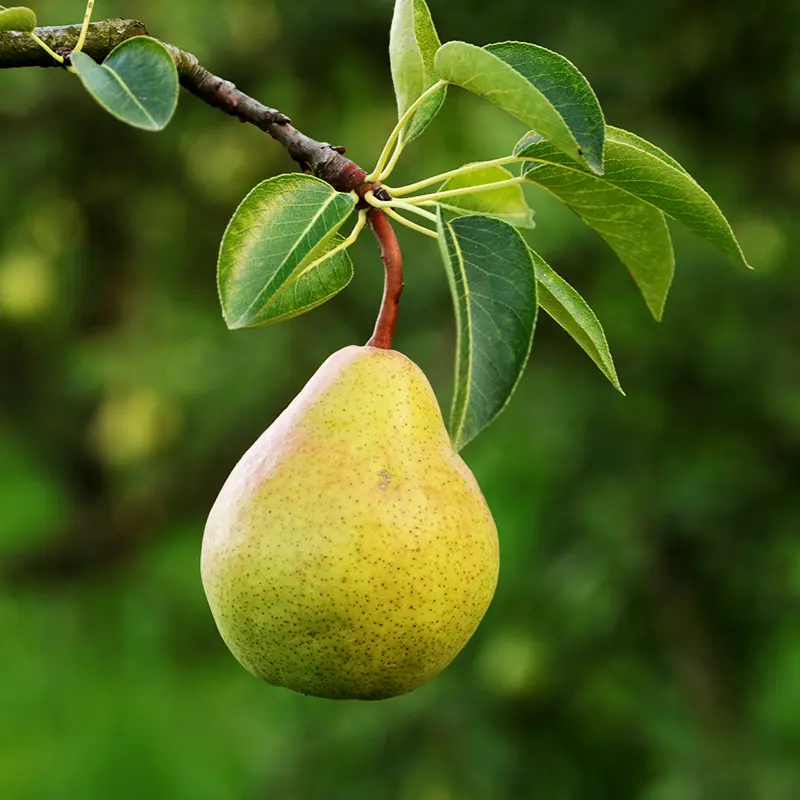7 Ways to Get Your Pear Tree to Produce More Fruit in Victoria, BC
Ensuring your pear tree thrives
Pear trees are a delightful addition to any garden in Victoria, BC, offering beautiful blossoms in the spring and delicious, juicy fruit in late summer and fall. However, like other fruit trees, pear trees require proper care and attention to maximize their fruit production. Factors such as pollination, pruning, and local climate conditions all play a role in ensuring your pear tree thrives.
Here are 7 ways to get your pear tree to produce more fruit in Victoria, BC, tailored to the region’s unique climate and growing conditions.
1. Choose the Right Pear Tree Variety for Victoria, BC
The variety of pear tree you plant greatly impacts its productivity. Victoria’s mild climate is well-suited to many pear varieties, but selecting the right one is crucial.
Tips:
- European Pears (Bartlett, Bosc, Anjou) thrive in Victoria’s coastal climate and are excellent for eating fresh or preserving.
- Asian Pears (Shinseiki, Hosui) do well in slightly warmer, sunnier spots and are prized for their crisp texture.
- Some varieties, like Bartlett, are partially self-fertile but produce more fruit with a compatible pollinator nearby.
2. Ensure Proper Pollination
Pollination is essential for pear trees to produce fruit. Most pear varieties require a second tree for cross-pollination.
Tips:
- Plant at least two different pear tree varieties that bloom at the same time.
- Encourage pollinators, such as bees, by planting nectar-rich flowers like lavender or wildflowers near your trees.
- Avoid using pesticides during flowering, as they can harm pollinators.
- If pollinators are scarce, hand-pollinate by transferring pollen between blossoms using a small paintbrush.
3. Prune Your Pear Tree Correctly
Proper pruning is key to ensuring a healthy, productive pear tree. Overcrowded branches can prevent sunlight and air circulation, reducing fruit production.
Tips:
- Prune annually in late winter or early spring while the tree is dormant.
- Remove dead, diseased, or damaged branches, as well as water sprouts and suckers.
- Shape the tree to create an open canopy, allowing sunlight to reach fruit-bearing branches.
- Avoid over-pruning, as this can reduce fruit production.
4. Provide Adequate Nutrition
Pear trees require the right balance of nutrients to produce abundant fruit. Nutrient deficiencies, especially in nitrogen, phosphorus, and potassium, can limit fruit yield.
Tips:
- Apply a balanced fertilizer in early spring and again after fruit harvest.
- Conduct a soil test to identify deficiencies and amend the soil accordingly.
- Avoid excessive nitrogen, as it promotes leafy growth at the expense of fruit production.
5. Water Consistently and Correctly
Victoria’s mild climate often provides adequate rainfall in spring, but during dry summers, consistent watering is crucial for fruit development.
Tips:
- Water deeply once a week during dry periods, ensuring the soil remains moist but not waterlogged.
- Use mulch around the tree to retain moisture, regulate soil temperature, and suppress weeds.
- Avoid watering directly on the trunk to prevent fungal diseases; instead, focus on the root zone.
6. Thin the Fruit for Better Quality and Yield
Pear trees often set more fruit than they can support, leading to small or poorly developed pears. Thinning the fruit allows the tree to focus its energy on fewer, higher-quality pears.
Tips:
- Thin the fruit when they are about the size of a marble, leaving one or two pears per cluster.
- Space pears 6–8 inches apart along the branches.
- Remove damaged, misshapen, or overcrowded fruit first.
7. Protect Against Pests and Diseases
Victoria’s coastal climate can create ideal conditions for pests and diseases that affect pear trees, such as codling moths, pear rust, and fire blight. Managing these threats is essential for healthy fruit production.
Tips:
- Inspect your tree regularly for signs of pests or diseases, such as holes in leaves, spots on fruit, or sticky residue.
- Use organic pest control methods, such as neem oil or insecticidal soap, to manage infestations.
- Apply dormant oil spray in late winter to control overwintering pests and fungal spores.
- Remove fallen leaves and fruit to prevent the spread of diseases.
Bonus Tips for Pear Tree Success in Victoria, BC
- Choose the Right Location: Plant your pear tree in a sunny spot with at least 6–8 hours of sunlight daily.
- Improve Drainage: Ensure the soil drains well to prevent waterlogging, which can lead to root rot.
- Be Patient: Pear trees may take 4–7 years to reach full fruit production, so consistent care and patience are key.
Conclusion
Getting your pear tree to produce more fruit in Victoria, BC, requires a combination of proper care, effective pollination, and proactive pest and disease management. By following these 7 steps, you’ll help your tree thrive and enjoy bountiful harvests for years to come.
For expert assistance with your pear tree, Ascent Yard Care offers professional tree care services in Victoria, BC, including pruning, fertilization, and pest management. Contact us today to ensure your pear tree produces the fruit you’ve been dreaming of!

